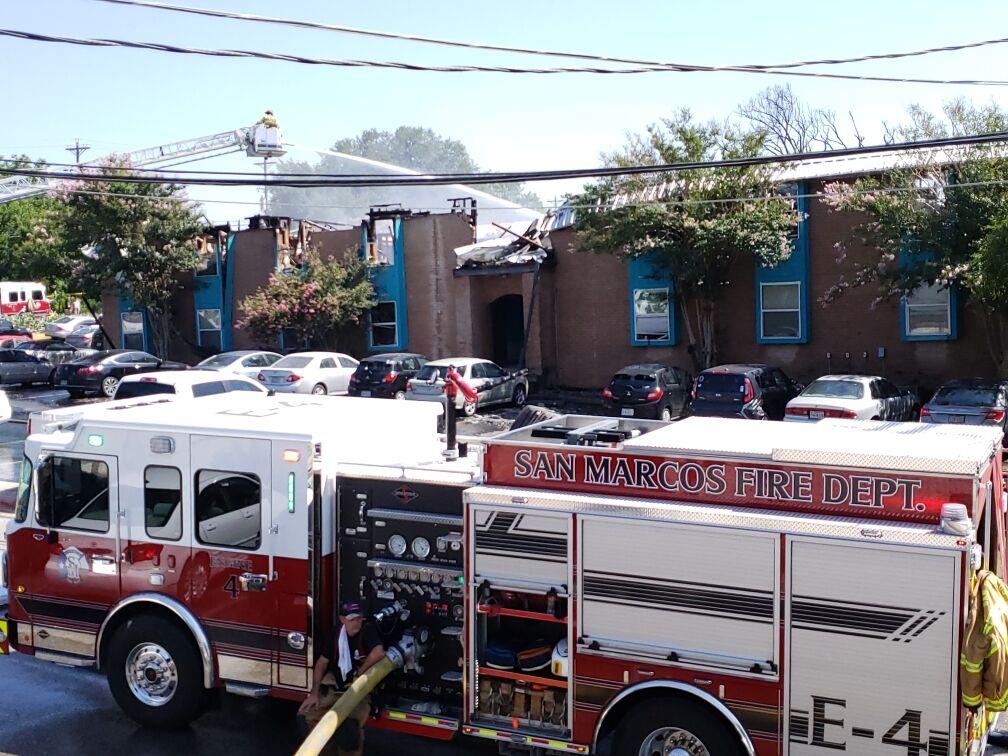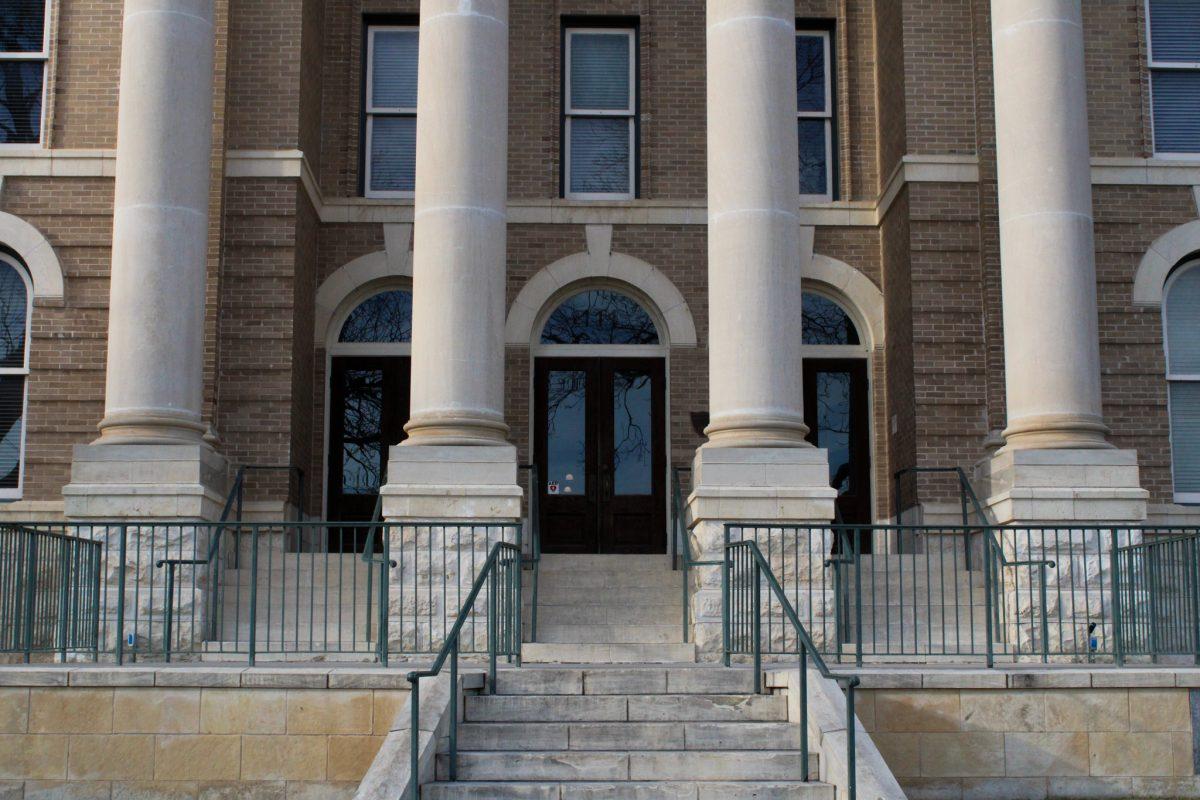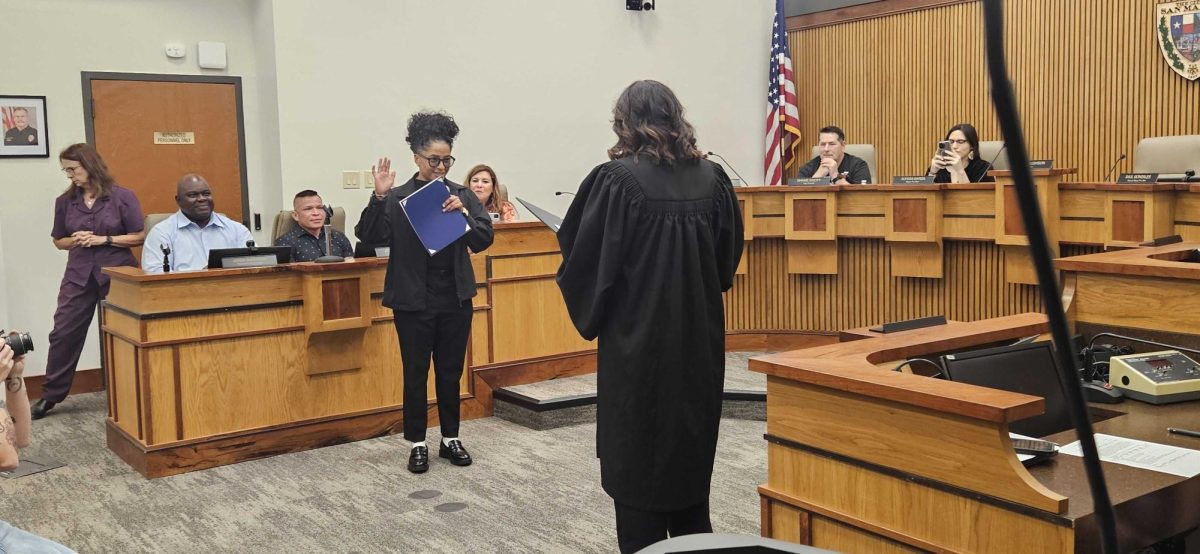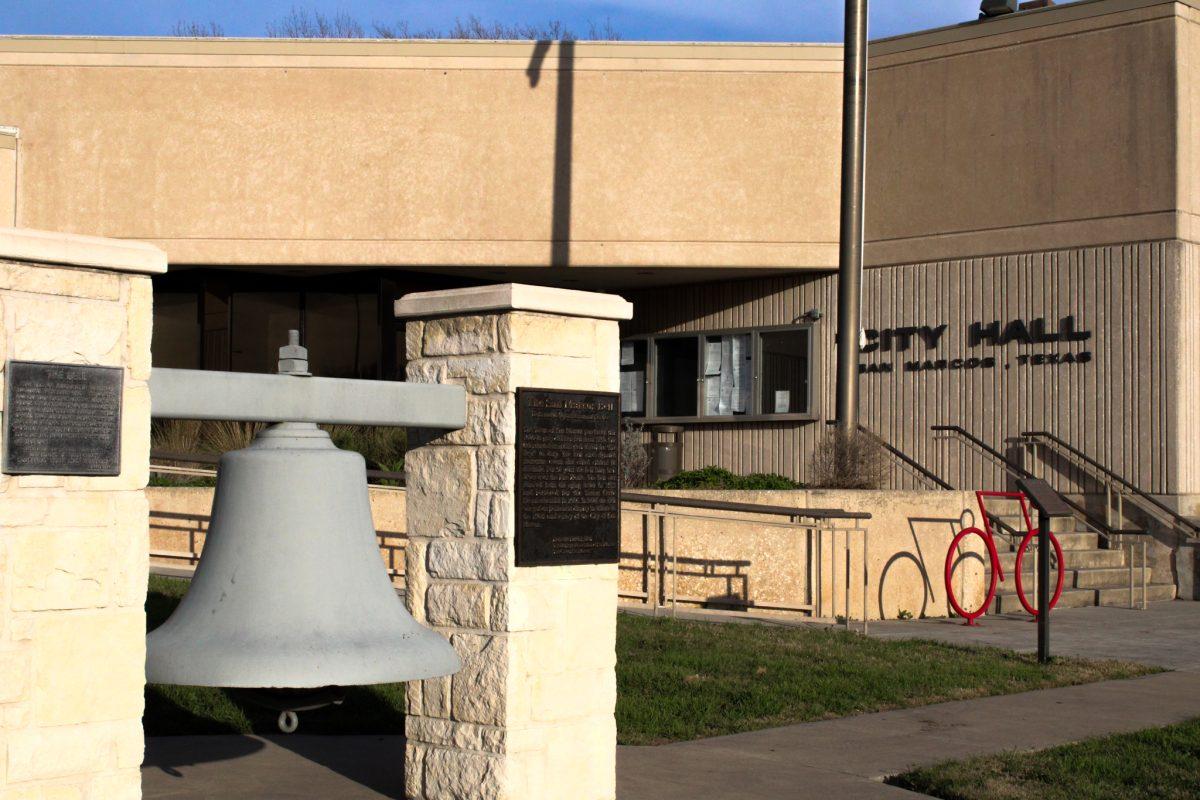Investigators continue to seek public help as the search for the individual responsible for causing the Iconic Village Apartments fire remains ongoing.
The fire broke loose in the early morning hours of July 20, 2018, killing five residents — Haley Frizzell, 19, Dru Estes, 20, David Angel Ortiz, 21, Belinda Moats, 21, and James Phillip Miranda, 23. Nearly 200 residents were also displaced.
The fire was deemed to be intentionally set and the deaths of the victims have been ruled as homicide, according to investigators. A reward of $110,000 was raised in August 2019 in hopes of gathering information on the suspect involved in setting the fire.
Funds raised for the reward was a collaborative effort among donations from the Houston Field Division of the Bureau of Alcohol, Tobacco, Firearms and Explosives, the City of San Marcos, the San Marcos Chamber of Commerce, the Frizzell and Ortiz family combined and an anonymous donor.
San Marcos fire and police departments, along with the Bureau of Alcohol, Tobacco, Firearms and Explosives (ATF) have taken steps to solve this case over the last three years, including building and burning two replicas of the complex to predict how the fire may have started and progressed.
However, San Marcos Fire Chief Les Stephens believes that until investigators receive a tip concerning the identity of the arsonist, the case is unlikely to move forward. Stephens said all possible avenues of solving the investigation have been exhausted.
“That’s the reason that we’ve offered the reward, and that’s the reason we’re trying to keep it in front of the community,” Stephens said. “We need someone to realize that they know something that they may not even realize it’s significant. They may not realize that it’s critical to the investigation, but it might be the one thing that really, you know, gives us the traction we need.”
To those personally affected by the fire, finding the suspect is not only important to keeping communities safe, but also serves as a justice for the loved ones lost. Filmmaker and Texas State alumnus Brian BK Frizzell, whose younger sister, Haley, was killed in the fire, is currently working on a documentary about the incident in hopes of opening the eyes of potential informants to the suffering the arsonist has caused and encouraging people to come forward with information.
“This was an extremely violent act that turned people’s lives upside down within a matter of minutes. And so, when you think about your loved one being part of that, it’s an extremely difficult thing to recognize as being real,” Frizzell said. “We were looking that they had reached a peaceful end, they weren’t aware of what was happening, and that they were just asleep and didn’t ever know. And as far as I know, that wasn’t the case for any of them . . . So, you know, it sucks for all of us to know and to try to deal with that fact that our loved ones did experience it and had to know that they were about to die.”
While Iconic Village’s fire codes were up to date at the time of its construction in the 1960s, investigators discovered they lacked vital safety measures, such as sprinkler systems and functional smoke alarms that keep fires in modern buildings contained.
“We’ve learned through the last 40 plus years, 50 years, that there are better ways to do things and now we build things differently,” Stephens said. “That’s the difference in this building, it wasn’t that the building wasn’t built correctly when it was built, it was just a different era, and the standards were different.”
Businesses and apartments are now required to have working smoke alarms, a sprinkler system and clearly marked exits to prevent fires from getting out of control. Local institutions like Texas State keep up with fire safety recommendations, despite many of the campus’ buildings, such as Old Main, having been constructed in the 20th century. All the university’s buildings contain sprinkler systems, fire alarms and clear exits to prevent massive infernos like the one at Iconic Village, according to Stephens.
Miguel Pacheco, a residential assistant at the Chautauqua Gaillardia Complex who has acquaintances affected by the fire at Iconic Village, said the university requires fire prevention training for all first year and third year residential assistants.
“They do demonstrations for us, teaching us how to use a fire extinguisher, teach you the proper way to use it, and the importance of having one, as well as doing this smoke training simulator,” Pacheco said. “But one of the big things in grandfathering in [buildings constructed prior to modern safety codes] is still adhering to certain policies and procedures continuing to update them even still.”
While the disaster showed the importance of modern fire safety, it was little consolation to those affected by the fire, like Frizzell. Survivors and family members of victims have since filed lawsuits against the apartment’s owners, property management company and manager.
“[Many of us feel] a lot of anger toward the people that operate that building,” Frizzell said. “They don’t warn you that the building was built before they were required to do any kind of fire safety. They don’t warn you that the roof had metal on top of wood that just held the fire and pushed it down rather than going up. There was nothing to stop this thing from happening.”
Anyone with tips about the Iconic Village fire, no matter how seemingly small, is encouraged to call 1-888-ATF-TIPS (1-888-283-8477).
Categories:
Search continues for arsonist responsible for Iconic Village Apartments fire
Madelyn Weirich, News Contributor
September 17, 2021
Photo courtesy of Catherine Rivas
Firefighters monitor smolder July 20 following blaze at Iconic Village Apartments on North LBJ Drive.
0
Donate to The University Star
Your donation will support the student journalists of Texas State University. Your contribution will allow us to purchase equipment and cover our annual website hosting costs.
More to Discover














